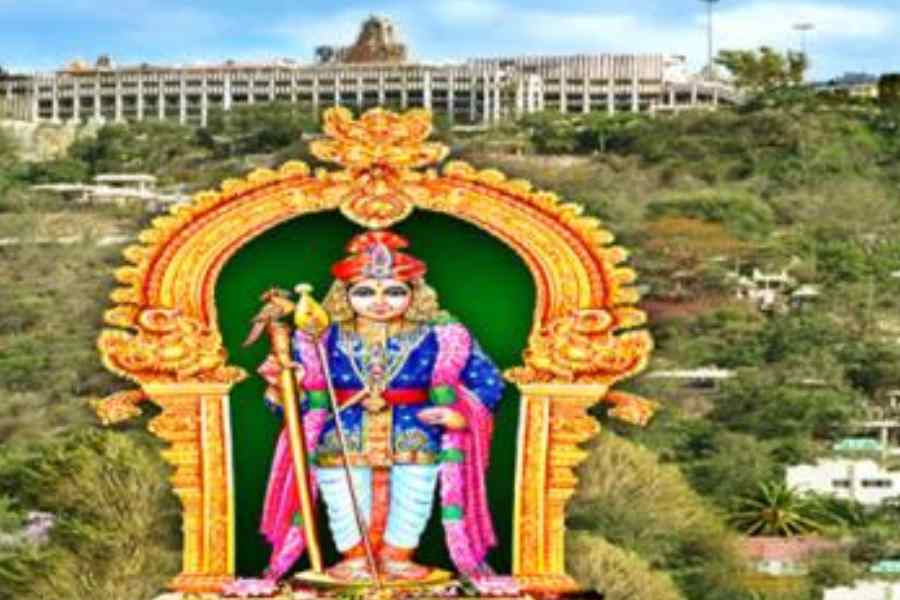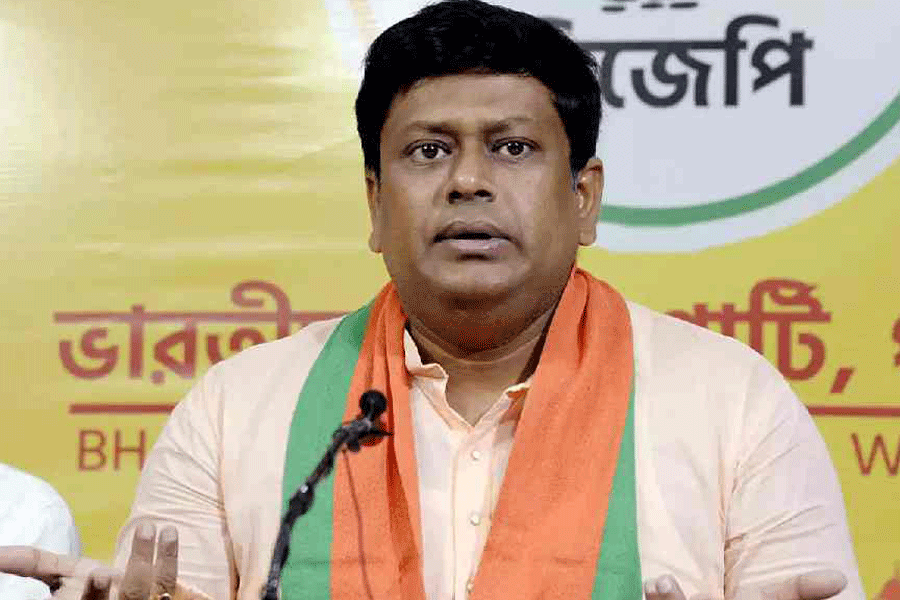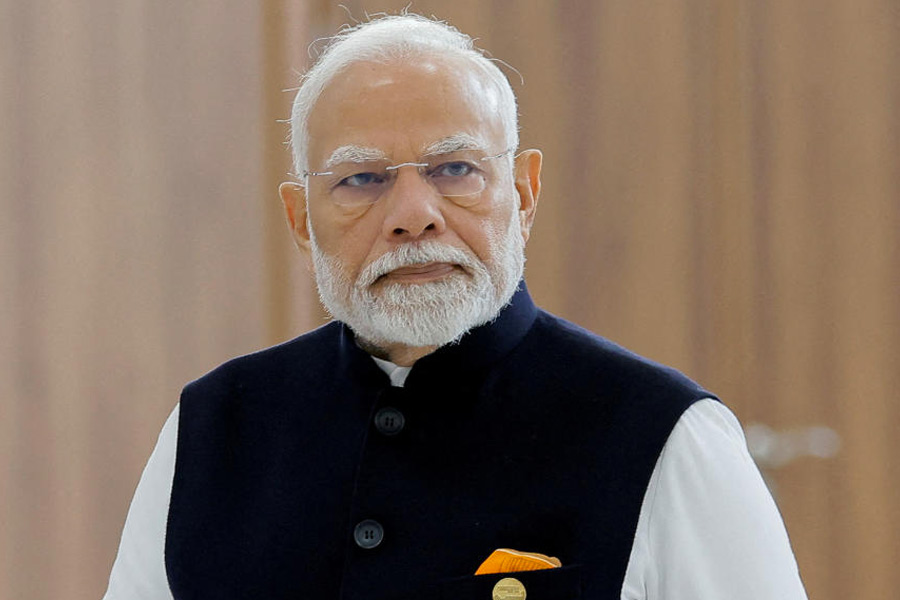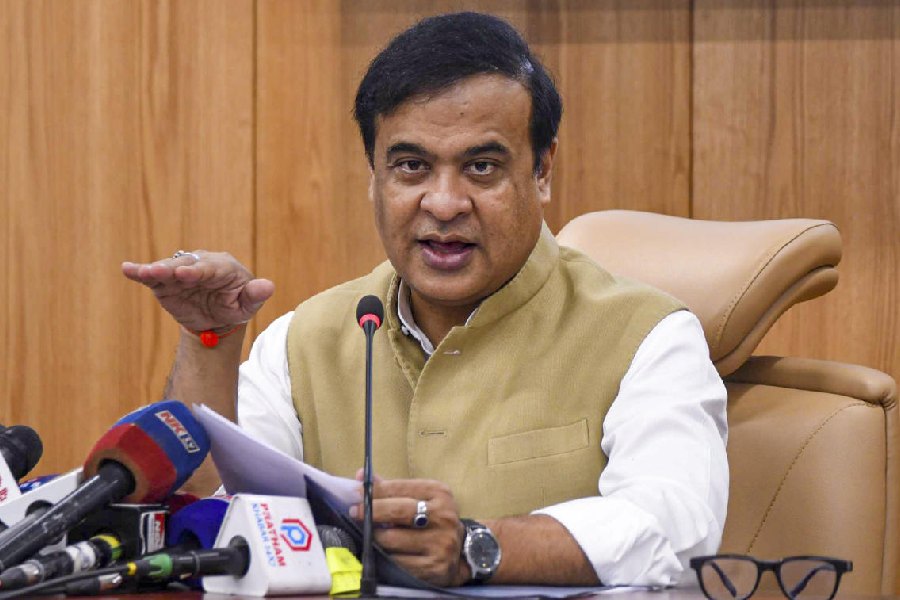The hill town of Palani, 485km southwest of Chennai, turned into a veritable melting pot of diverse faiths and cultures crystallised around the Tamils’ ancient deity Murugan last weekend, subtly countering hardcore Hindutva through a show of inclusiveness.
The first-ever two-day Muthamizh Murugan International Conference, which brought together scholars and devotees from within the country and abroad, was organised by the DMK government to drive home the message that the south had from ancient times nurtured an inclusive, non-sectarian form of worship which is independent of the Vedic-Sanskritic tradition.
The event was seen as an attempt by the DMK to use soft power to counter the hardcore Hindutva of the BJP and the Sangh Parivar at a time the saffron camp has been making efforts to break new grounds in the south and also project the ruling party in Tamil Nadu as anti-religion.
The event was organised on August 24-25 on the campus of the Arulmigu Palaniandavar College of Arts and Culture by the Hindu Religious and Charitable Endowments (HR & CE) department of the Tamil Nadu government.
At a time when distinctions between spiritual, cultural and religious spaces are becoming increasingly nebulous in today’s political context, the event showcased folk elements, including an exhibition and dance and music events, to put up an offbeat intellectual initiative aimed at counterbalancing the BJP’s hegemonistic Hinduism.
Palani is the third of the six hill abodes of Lord Murugan, the Lord of the Hills, a “naturalistic deity” whose worship Tamils hold as unique and is based on their ancient classification of the landmass into five ecological zones.
The tradition has survived despite the fact that Murugan worship was later appropriated by the Vedic tradition around the 7th-8th century AD during the time of Adi Shankara.
Tholkappiyam, the ancient Tamil text dating back to 350 BC, speaks of ancient Tamils having divided the land in the southern part of the peninsula into five zones — Kurinji (hill areas), Mullai (pastoral and forest land at the foothills), Marutham (plains), Neithal (coastal belts) and Paalai (desert). Murugan is the spear-holding presiding deity of the hills who protects the hill tribes, largely hunters.
While there are several legends, Puranic stories and other literary sources on the origins of the Palani hills, Murugan worship has over the centuries spread to various countries like Sri Lanka, Malaysia, Singapore, Myanmar, Indonesia, Australia, Mauritius, New Zealand, South Africa, the UK and the US as Tamils migrated to work in
plantations abroad.
The Palani hills became the fountainhead of the Murugan cult as the original deity was fashioned by the mystic-saint Bogar in the Tamil Siddha tradition, not in stone or metal but with rare nine medicinal herbs (Navapashanam), which gives the deity and the place its curative power, said Tamil professor Dr Meenakshisundaram, who vetted the conference’s research papers.
Murugan worship transcends narrow theological confines and shares affinities with many religious traditions including Buddhism and Jainism.
“All see a reference point in the magnetic pull of Palani Murugan, which explains the congregation of scholars, orators and devotees from India and abroad,” he told The Telegraph over the phone when asked about the conference.
Amid an aggressive push by the BJP in Tamil Nadu that threatens to queer the pitch for the Dravidian Movement and seeks to target the DMK in particular for its atheistic-rationalist political ideology and “Sanatan Virodhi bias”, the conference was like manna from heaven for the ruling party.
Organised by the HR & CE department which oversees the administration of temples and mutts, the event also sent out a clear message that the DMK government is neither anti-religion nor anti-spiritualism, rather it aims to “enable all to understand the philosophical doctrines of Murugan and promote global harmony”, said HR & CE minister P.K. Sekarbabu when asked about the conference’s objective.
Chief minister M.K. Stalin’s inaugural message to the conclave via videoconference highlighted the work done by his government in the last three years to renovate and support hundreds of temples, retrieving thousands of acres of encroached land.
“This international conference will be a landmark not just in the history of the HR & CE department, but also in the journey of Tamil Nadu’s spiritual history,” Stalin said.
The Tamil language should find its rightful place in temple worship and the sanctum should be a place of equality, he said, referring to the government’s decision to employ trained people of all castes as Archakas, or priests.
Of the around 1,300 research papers submitted at the conference, nearly 100 were by foreign scholars with the Japanese contingent being the heaviest contributor, Meenakshisundaram said.
The exhibition on the six abodes of Murugan attracted several lakh visitors. The research papers offered insights into how the Murugan cult spread to other countries without necessarily using the same name but sharing features of the icon, the social and political changes that led to the appropriation of Murugan worship by the Vedic pantheon, Murugan’s influence on the Tamil Bhakti movement and its parallels with Buddhism and Jainism and the diversity and inclusiveness of the deity’s worship. The minister said Murugan worship was a pan-cultural phenomenon, not just religious.
Despite criticism from its allies, notably the CPM and the Dalit party VCK, over the involvement of a secular government in a religion-centric event, the DMK decided to walk the razor’s edge between religion and culture. “This conference is not just about spiritualism, it is a Tamil cultural conference,” said DMK youth wing leader and minister Udhayanidhi Stalin.
A stunned BJP state president, K. Annamalai, tried to make light of the conference’s significance, terming it a political U-turn by the DMK.
Senior DMK leader and former MP T.K.S. Elangovan refuted that impression. “The conference was to remind people of a wider cultural phenomenon since ancient times of a unique form of Tamil worship independent of the Vedic-Sanskritic tradition,” Elangovan told this newspaper.










